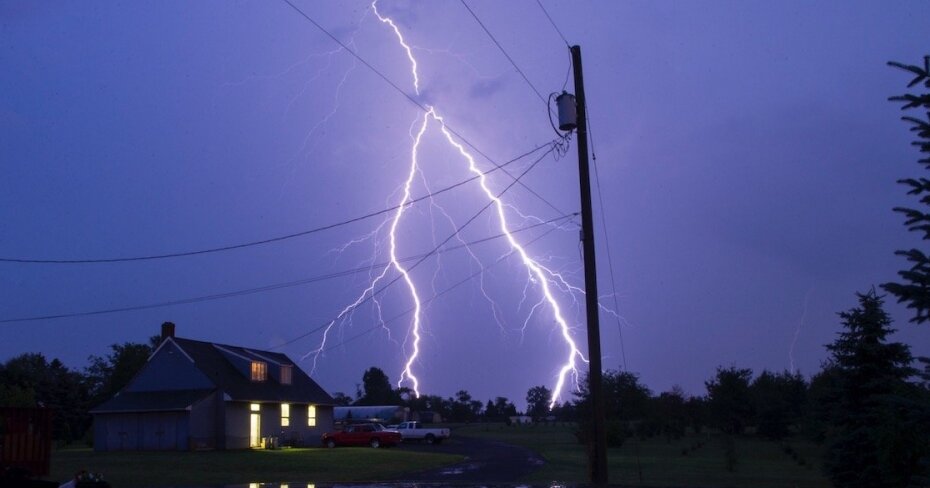This is why your home insurance rates are going up
By: Alexandra Bosanac on March 15, 2019
Did you recently open a letter from your home insurance provider and were shocked to find your rates increased? You’re not alone.
Over the past year, home insurance prices increased in every province, according to a report from software firm Applied Systems. The report analyzed more than 1.3 billion quotes and found that premiums for personal property insurance rose by an average of 5.8%.
Premiums rose fastest in Alberta and British Columbia, at 12.1% and 11.2%. The report also shows that the cost of home insurance has been rising since at least 2015.
It’s tough to say how that translates into dollar amounts. The home insurance market is unregulated, making data on premiums hard to find. According to a 2018 survey from J.D. Power, the average policyholder in Quebec pays $960 a year; in Western Canada, it’s $1,200; and in the Atlantic and Ontario regions, homeowners pay $1,284.
So what gives? Why are home insurance rates rising so quickly? We looked into the major reasons.
Capped pricing on auto insurance rates is one factor
Premiums are tightly regulated in Canada’s largest auto insurance markets, such as Ontario and Alberta. It means insurers have to get permission from the provincial government to increase rates beyond the regular rate of inflation (which generally fluctuates between one to 3%).
Auto insurance companies — many of which also offer home insurance as a product — claim that payouts for accidents are rising to unsustainable levels due to a number of factors (chief among them increased insurance fraud and the fact cars cost more to repair) and that government regulation is preventing them from hiking rates to compensate.
Home insurance, on the other hand, is a completely unregulated market, so insurers who offer it can raise rates as much as they want.
Pete Karageorgos, director of consumer and industry relations for the Insurance Bureau of Canada, says that it’s bad business for insurance companies to raise prices on one product to make up the difference for losses in another. But other industry insiders say that’s exactly what’s happening.
With “really hard regulation on the auto insurance side… companies need to make a higher margin on home [insurance] than ever before,” says SurexDirect.com’s chief operating officer Matthew Alston.
Home insurance has been “underpriced”
A decade ago, home insurers could afford to be more generous with customers, Alston says, because large claims were few and far between.
“A lot of the wording in the policies were a little too generous on replacement costs, some companies were just replacing the entire house for new shingles,” he says.
Now, with changing weather patterns, it just takes one hailstorm in a downtown area to wipe out a year’s worth of profit, says Alston.
The climate of the past is no longer a reliable indicator of the future, which leads to the next point.
Climate change is affecting insurance premiums worldwide
In 2018, insurance companies across Canada paid more than $1.9-billion to homeowners and property owners as a result of climate change, according to the IBC.
Up until the mid-2000s, insurance companies in Canada could expect to pay out $400-million a year in claims as a result of severe weather.
But now, a single event can trigger claims that size, such as last year’s tornadoes in the Ottawa and Gatineau region, which Karageorgos says caused about $410-million worth in damage. “That number will increase as time goes on” and more claims are filed, he adds.
Insurance companies need insurance, too. It’s what’s called reinsurance, and it’s offered by mega-insurers. The risk presented by insurance providers gets pooled together on a global scale. Meaning, natural catastrophes that occur in other parts of Canada — even in other parts of the world — push premiums up for all policyholders because insurers themselves are paying more.
What can you do about it?
Insurers are responding to increasing claims costs by introducing higher deductibles and lowering the limits on benefits.
Reversing climate change is definitely out of most people's control, but there are things you can do to lower your own home insurance costs.
- Bundle home insurance with your auto insurance policy.
- Increase your deductible.
- Avoid making claims for small things.
- Assess your risk for events like flooding and take steps to weatherproof your home.
- If you can handle taking on some risk yourself, you can buy a cheaper insurance policy.
- Before your insurance policy renews for another year, talk to a broker, who can help you compare the market and can guide you towards a better deal.


